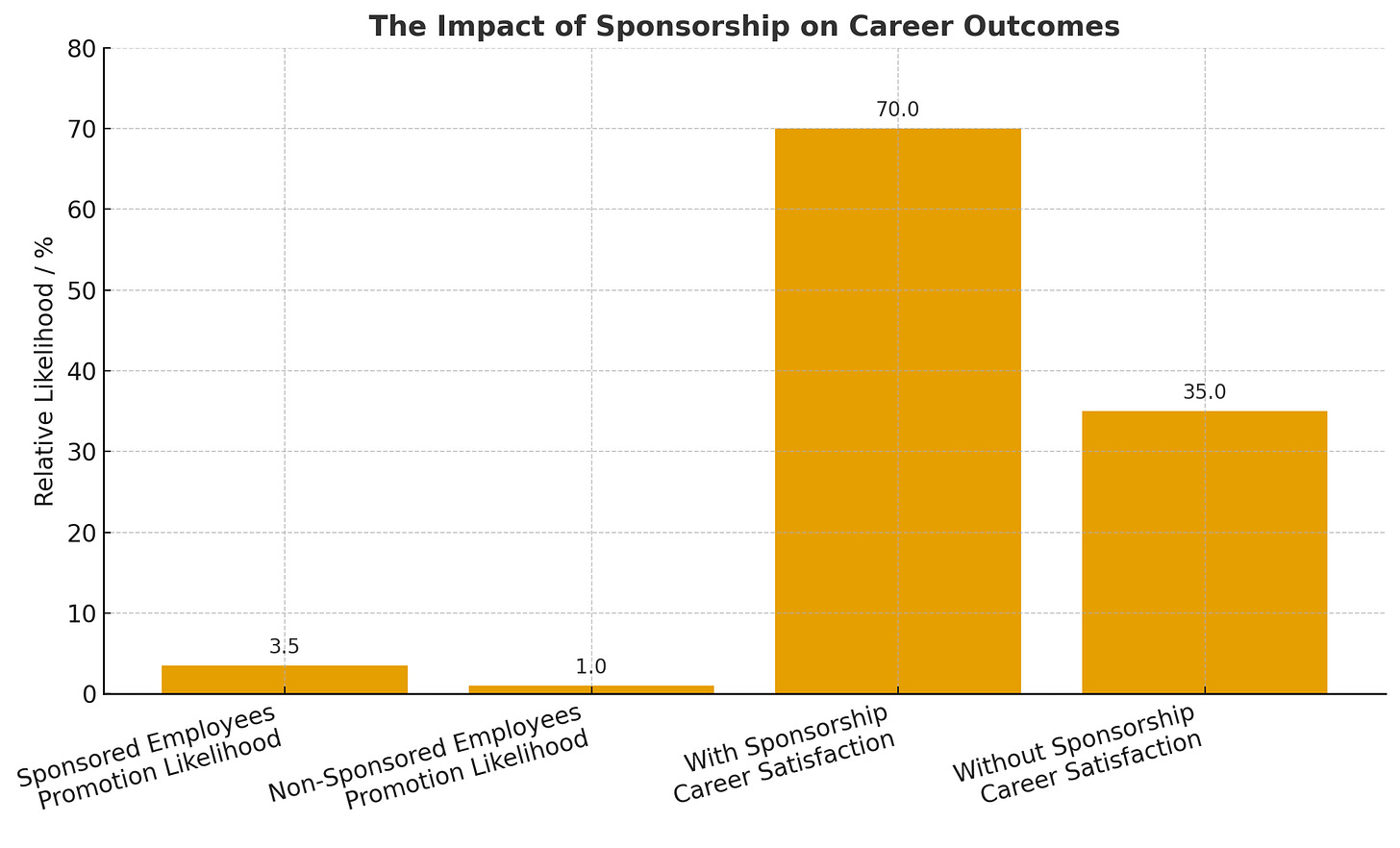How to Manage Up: Turning Bosses into Sponsors
#101: Frameworks for Aligning with Senior Leaders and Building Career Sponsorship
Table of Contents
The Origins of “Managing Up”
Why Managing Up Matters More Than Ever
The Sponsorship Gap: Competence vs. Advocacy
The Alignment–Leverage–Sponsorship Framework
Pragmatic Tools for Managing Up
Real-World Examples & Case Studies
How to Measure Progress
The Risks of Getting It Wrong
How to Use This
1. The Origins of “Managing Up”
The concept of Managing Up emerged in the 1980s and 1990s when hierarchical organizations dominated. As companies scaled, middle managers discovered survival wasn’t about just executing tasks—it was about aligning with executive priorities before being told what to do.
Harvard Business Review helped popularize the term as the “art of building an effective relationship with your superior.”
Initially viewed as a soft skill, Managing Up evolved into a strategic career capability. In industries like consulting, tech, and finance, it became a career strategy for acceleration: those who could compress complexity into decision-ready insights advanced faster than technically stronger but politically invisible peers.
Managing up is now part of the Manager Relationship Strategy every professional needs to master.
2. Why Managing Up Matters More Than Ever
Today’s corporate world makes Executive Alignment and Career Sponsorship essential to growth:
Flatter, faster organizations mean leaders manage 10–15 direct reports. They don’t have time to “manage down.” You must bridge the gap.
Remote work reduces visibility. If you don’t manage up intentionally, your achievements vanish into dashboards.
Budget constraints reward professionals who show ROI—not effort.
Talent bottlenecks mean only those with active sponsorship advance.
Competence is distributed. Sponsorship is scarce. Managing up is how you compete for it.
3. The Sponsorship Gap: Competence vs. Advocacy
Think of your career strategy as a two-engine jet:
Competence: your ability to deliver.
Advocacy: someone else’s willingness to sponsor you.
Without both, you don’t get lift.
Research shows employees with Career Sponsorship are 3.5x more likely to be promoted within two years. Managing up bridges that gap—turning competence into influence without authority.
4. The Alignment–Leverage–Sponsorship Framework
This leadership communication framework operationalizes managing up.
Stage 1: Alignment
Understand what your boss is judged on.
Translate your goals into their metrics (margin, growth, churn, compliance).
Ask:
“If I make progress here, does it move the needle for you?”
This is Executive Alignment—where your performance amplifies theirs.
Stage 2: Leverage
Your job: reduce cognitive load. Bring clarity, not complexity.
✅ Present options and risks—not raw problems.
✅ Build a stakeholder management map to understand their pressures upward and sideways.
✅ Speak the language of digital transformation and AI strategy when relevant to their goals.
Leverage means you become an asset, not another dependency.
Stage 3: Sponsorship
This is the outcome of consistent alignment and leverage.
When your boss advocates for you in rooms you’re not in—you’ve achieved Career Sponsorship.
You’ve shifted from being “reliable” to being a force multiplier.
Keep reading with a 7-day free trial
Subscribe to The Strategy Stack to keep reading this post and get 7 days of free access to the full post archives.





